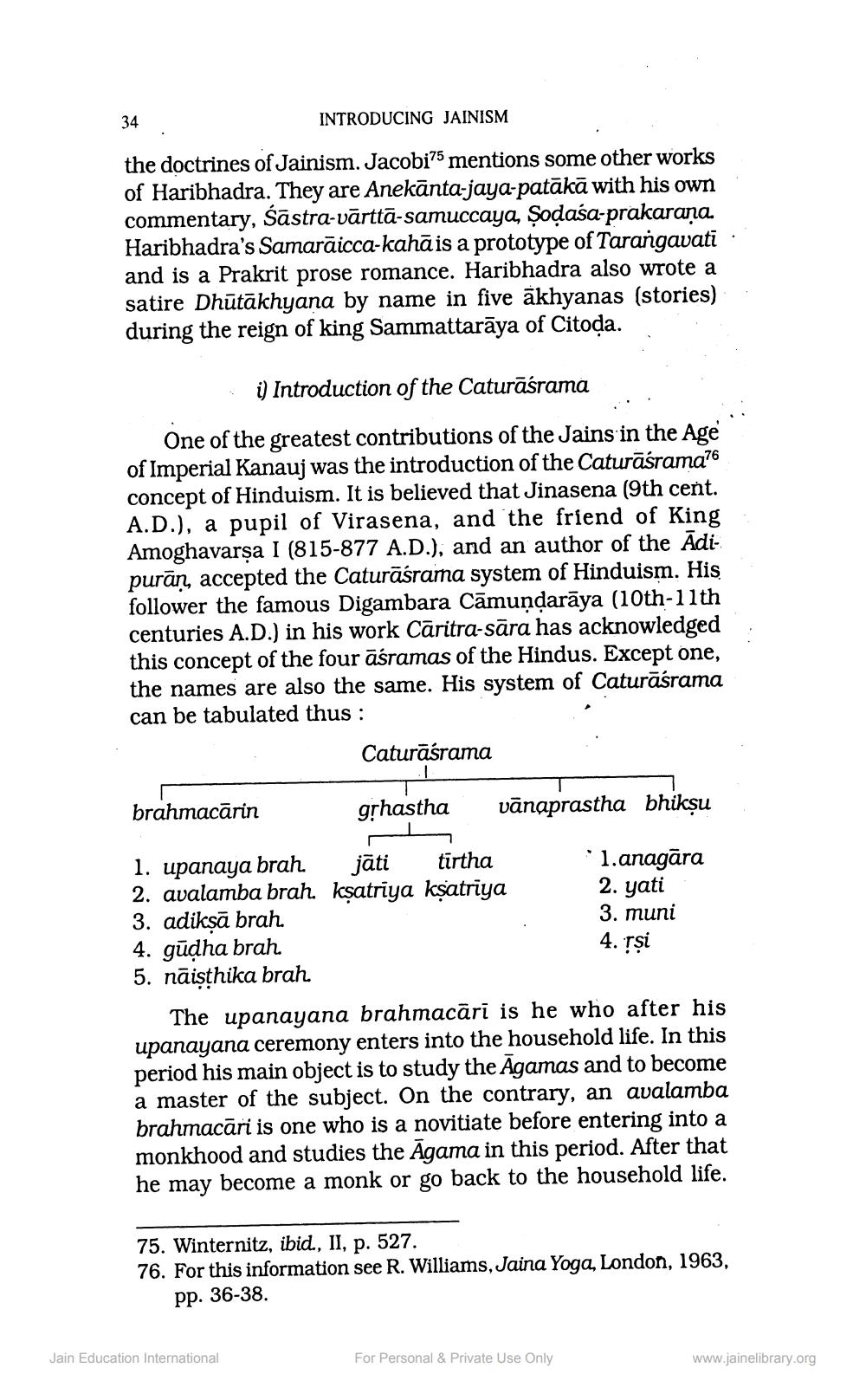________________
34
INTRODUCING JAINISM
the doctrines of Jainism. Jacobi75 mentions some other works of Haribhadra. They are Anekānta-jaya-patākā with his own commentary, Šāstra-vārttā-samuccaya, Șodaśa-prakarara. Haribhadra's Samarāicca-kahā is a prototype of Tarangavati and is a Prakrit prose romance. Haribhadra also wrote a satire Dhūtākhyana by name in five ākhyanas (stories) during the reign of king Sammattarāya of Citoda.
i) Introduction of the Caturāśrama
One of the greatest contributions of the Jains in the Age of Imperial Kanauj was the introduction of the Caturāśrama76 concept of Hinduism. It is believed that Jinasena (9th cent. A.D.), a pupil of Virasena, and the friend of King Amoghavarşa I (815-877 A.D.), and an author of the Adipurāņ, accepted the Caturāśrama system of Hinduism. His follower the famous Digambara Cāmundarāva (10th-11th centuries A.D.) in his work Caritra-sāra has acknowledged this concept of the four asramas of the Hindus. Except one, the names are also the same. His system of Caturāsrama can be tabulated thus :
Caturāśrama
brahmacārin
grhastha
vānaprastha bhikṣu
1. upanaya brah jāti tirtha
1.anagāra 2. avalamba brah ksatriya ksatriya 2. yati 3. adikşā brah
3. muni 4. gūdha brah
4. rși 5. nāişthika brah
The upanayana brahmacāri is he who after his upanayana ceremony enters into the household life. In this period his main object is to study the Agamas and to become a master of the subject. On the contrary, an avalamba brahmacāri is one who is a novitiate before entering into a monkhood and studies the Agama in this period. After that he may become a monk or go back to the household life.
75. Winternitz, ibid., II, p. 527. 76. For this information see R. Williams, Jaina Yoga, London, 1963,
pp. 36-38.
Jain Education International
For Personal & Private Use Only
www.jainelibrary.org




